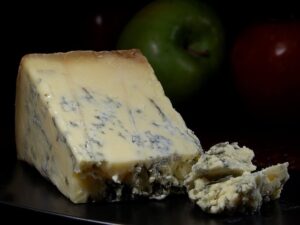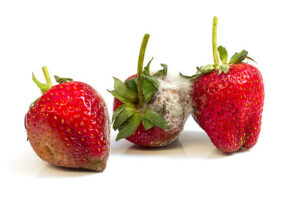Moldy Foods: Use or Pitch
go.ncsu.edu/readext?1025982
en Español / em Português
El inglés es el idioma de control de esta página. En la medida en que haya algún conflicto entre la traducción al inglés y la traducción, el inglés prevalece.
Al hacer clic en el enlace de traducción se activa un servicio de traducción gratuito para convertir la página al español. Al igual que con cualquier traducción por Internet, la conversión no es sensible al contexto y puede que no traduzca el texto en su significado original. NC State Extension no garantiza la exactitud del texto traducido. Por favor, tenga en cuenta que algunas aplicaciones y/o servicios pueden no funcionar como se espera cuando se traducen.
Português
Inglês é o idioma de controle desta página. Na medida que haja algum conflito entre o texto original em Inglês e a tradução, o Inglês prevalece.
Ao clicar no link de tradução, um serviço gratuito de tradução será ativado para converter a página para o Português. Como em qualquer tradução pela internet, a conversão não é sensivel ao contexto e pode não ocorrer a tradução para o significado orginal. O serviço de Extensão da Carolina do Norte (NC State Extension) não garante a exatidão do texto traduzido. Por favor, observe que algumas funções ou serviços podem não funcionar como esperado após a tradução.
English
English is the controlling language of this page. To the extent there is any conflict between the English text and the translation, English controls.
Clicking on the translation link activates a free translation service to convert the page to Spanish. As with any Internet translation, the conversion is not context-sensitive and may not translate the text to its original meaning. NC State Extension does not guarantee the accuracy of the translated text. Please note that some applications and/or services may not function as expected when translated.
Collapse ▲There are two kinds of people—those who throw food away with the first sign of mold and those who scrape it off and eat the food anyway. Which is right? Which is risky?
To begin, let’s talk about mold. They are microscopic fungi that can live on plant or
animal matter. There are many different types of molds and are beneficial while others could be harmful. Abigail Snyder, an assistant professor with The Ohio State University’s College of Food, Agricultural and Environmental Sciences writes that “mold is generally considered spoilage organisms, as they cause undesirable changes to the appearance, texture, smell, and taste of the product. Sometimes mold growth has more food safety concerns as well.”
Some molds can cause allergic reactions and respiratory problems (so, don’t sniff moldy foods). Others can produce something call “mycotoxins”. These are poisonous
substances that can make people sick (especially those that are highly susceptible such as the elderly, children and those with chronic illnesses). Also, mycotoxins are heat stable—which means they won’t be destroyed by heat—so cooking doesn’t help.
One of the problems with mold is that you really only see part of it. Below that fuzzy
green or white stuff on the surface of foods, there may be “roots” or “root threads”
deep into the food and may spread toxins throughout the food.
 On the other hand, some molds may be good. Certain cheeses (like blue and Brie) and dried meats use mold as part of their fermentation and development. These are safe to eat.
On the other hand, some molds may be good. Certain cheeses (like blue and Brie) and dried meats use mold as part of their fermentation and development. These are safe to eat.
Molds are not really fussy about the temperatures at which they grow or if the food is high in sugar or salt (which tends to inhibit other pathogens). Many molds prefer warm temperatures and high humidity, but there are others that can live at refrigerator temperatures.
Deciding to pitch and when it’s OK to eat moldy food can be a difficult decision. While it is good to want to avoid food waste, in some cases (depending upon the type of food) eating foods with mold may be risky.
Here are some general recommendations to either PITCH or USE moldy foods from the USDA. A complete chart of “Use or Discard Moldy Foods” can be found at the USDA.gov website.
- Lunchmeats, bacon or hotdogs, cooked leftover meat and poultry. PITCH. These foods have a high moisture content and can be contaminated below the surface. They may also have bacterial growing along with the mold.
- Hard salami and dry-cured country hams. USE. Scrub mold off the surface. It is normal for these shelf-stable products to have surface mold.
- Hard cheese. USE. Cut off at least 1” around and below the mold spot.
- Soft cheeses (such as cream cheese, shredded or sliced cheeses) PITCH.
- Soft fruits and vegetables
 (cucumbers, peaches and tomatoes) PITCH. These foods have high moisture content and can be contaminated below the surface.
(cucumbers, peaches and tomatoes) PITCH. These foods have high moisture content and can be contaminated below the surface. - Firm fruits and vegetables (carrots, peppers, cabbage). USE. Cut off at least 1” around and below the mold spot.
- Bread and baked goods. PITCH. These foods are porous and can be contaminated below the surface.
- Beverages (like open juice or coffee) PITCH. The mycotoxin can easily spread in the liquids.
If you’re cutting mold off of a product, be sure to keep the knife out of the mold itself so you won’t cross contaminate the other parts of the food. Containers containing the moldy food should be washed with warm water and soap and can be re-used.
This is one of those times when being conservative may be best. Remember the old
saying “when in doubt…throw it out.”
Sources: fsis.usda.gov and Chow Line, The Ohio State University
Syracuse is a Family and Consumer Science team member and can be reached at N.C. Cooperative Extension, Brunswick County Center 910-253-2610 or by email at
clsyracu@ncsu.edu



